DEI
How to Build Real Inclusion – Not Just Posters and Policies

“Inclusion” has started to sound a lot like a rebranded version of that old startup cliché: We’re a family here.
For many organizations, it’s little more than a legal requirement — something to put on paper, mention during onboarding, and forget once the real work begins. Others treat it like a convenient value — embraced only when it doesn’t interfere with the bottom line.
The messaging is everywhere. Diversity posters hang on the walls. All-hands meetings are abuzz with buzzwords such as “belonging” and “respect.” Career pages feature photos of a carefully curated cross-section of identities. But get into the day-to-day culture, and it’s not often so. Microaggressions are ignored. Soft voices are silenced. Teams may be diverse, but inclusion? That’s less easy to spot.
So what is real inclusion in the workplace, and how do you build it past policy and performative behavior? In this article, we’re going to deconstruct what inclusion really looks and feels like when it’s working. You’ll learn how to move past surface-level DEI best practices and start building an inclusive workplace where belonging isn’t just a buzzword.
We’ll explore the mindset shifts and practical steps that help create psychological safety, cultural trust, and inclusive leadership. From inclusive hiring and onboarding to allyship programs and everyday team habits, we’ll walk through the specific, actionable ways to build a culture where everyone can thrive. Along the way, we’ll call out what isn’t working, and name what needs to change.
Because diversity without inclusion is noise. And action without inclusion is just decoration.
What inclusion really is and why it matters
Inclusion is often confused as being a sequence of courtesy practices or HR initiatives. But at its core, it’s about creating a place where every identity, background, and perspective feels not just invited, but valued, listened to, and empowered to contribute meaning.
At its best, inclusion goes beyond symbolic recognition and is structural. It’s not a matter of inviting others in and saying, “Just fit in” — it’s a matter of rearranging the space so that more people can thrive in their own skin. That involves re-examining everything from the way meetings are held to how promotions are made.
Many companies claim to operate on a merit-based model. The idea is simple: reward the most capable, promote based on performance, and let talent rise to the top. But when inclusion is missing, meritocracy becomes a myth. The playing field isn’t level when access, visibility, and psychological safety are unevenly distributed. Real inclusion means recognizing those imbalances, and actively correcting them.
In inclusive organizations, you’ll see things like:
- Decisions shaped by diverse perspectives, not just by the loudest or most senior voices
- Psychological safety embedded in team culture, not just talked about at offsites
- Career pathways designed to identify and elevate overlooked talent, not just fast-track the familiar
- Cultural intelligence applied in daily interactions, not confined to one annual training
- Feedback systems open and fair across levels and identities, not driven by hidden bias
On the flip side, here’s what often signals performative inclusion:
- Public celebrations of diversity with little follow-through behind the scenes
- “Open-door” cultures that aren’t psychologically safe to walk through
- DEI values only activated when convenient or aligned with business incentives
Organizations that embrace true inclusion gain far more than a feel-good headline. Inclusive work cultures have higher engagement, improved collaboration, and enhanced trust. They have more diverse perspectives, and thus a richer innovation and decision-making process. And above all else, they reduce turnover by building cultures in which individuals actually want to stay. No wonder then that more than three-quarters of job seekers actively look for a diverse workforce — it’s not just a nice-to-have, it’s a signal that the company knows how to build a place people want to join.
Today’s top talent, especially younger generations, aren’t swayed by empty slogans. They hear what businesses do, not what they say. A truly inclusive workplace isn’t based on posters or policies. It’s based on routine behavior, processes, and leadership that translate to an actual commitment to equity and belonging.
What real inclusion looks like and how to make it happen
Inclusion isn’t a trend. It’s not a brand statement or a one‑page DEI plan. It’s a lived experience that shapes how people show up, speak up, grow, and stay. Real inclusion means that everyone, regardless of their background, identity, health, or circumstances, has access to opportunity and a sense of belonging that doesn’t fade after orientation.
Below are seven core traits of an inclusive workplace, along with how to make each of them real — not just visible.
1. Psychological safety above all
Inclusion starts with safety. Not the kind that protects the company from lawsuits, but the kind that protects employees from shame, silence, and fear. If people can’t be honest — if they’re constantly editing themselves or absorbing microaggressions without response — there’s no inclusion to speak of.
To build this into the culture:
- Create norms where people are allowed to say “I disagree” or “I don’t know” without risk
- Encourage managers to admit what they’re still learning — it opens the door for others to do the same
- Make space for emotional honesty, not just productivity
When this is missing, people retreat into silence — or walk out the door.
2. Equity of access and opportunity
Many companies call themselves merit-based. But what they often mean is comfort-based — promoting those who seem like “a natural fit.” That’s not equity. That’s replication.
To move toward real equity:
- Audit who gets tapped for stretch roles, speaking slots, or visibility — and who doesn’t
- Clarify promotion criteria, and make feedback accessible, not political
- Build mentorship and sponsorship programs for people outside the dominant identity group
- Watch for “potential” being assigned more generously to those who already look like leadership
The cost of ignoring this? You may retain your performers — but you’ll lose your potential.
3. Authentic voice and representation
Representation is more than how your About page looks. It’s about who sets the tone, who holds the mic, and who gets to influence what success even means here.
To make representation meaningful:
- Include diverse identities in strategic decisions, not just storytelling
- Pay and credit ERG leaders and cultural contributors for their work
- Regularly review who’s shaping policy, hiring, and communications — and whether that group reflects your actual workforce
A diverse team without power is not inclusion. It’s optics.
4. Everyday cultural intelligence
An inclusive workplace isn’t built in keynotes or training slides. It’s built in hallway conversations, project check-ins, Slack threads, and Zoom calls. This is where respect, or exclusion, is practiced every day.
To embed cultural intelligence:
- Train managers to notice who’s being interrupted, overlooked, or talked over
- Use inclusive language in job posts, internal memos, and all-hands agendas
- Create quiet feedback channels for those who don’t feel safe speaking in the open
- Don’t default to one cultural rhythm — design meetings, deadlines, and celebrations with flexibility and variety
The biggest signals of safety aren’t formal. They’re social.
5. Full accessibility and disability inclusion
If your inclusion strategy plan doesn’t fully consider disability — visible and invisible — it’s incomplete. Period. Mental health, neurodiversity, chronic conditions, and sensory needs are present in every company, even if unacknowledged.
To build true accessibility:
- Design systems that don’t require disclosure to get support
- Normalize accommodations as part of team norms, not exceptions
- Invest in platforms and tools that work for all users — not just the default user
- Train teams on how to show respect and flexibility without pity or awkwardness
When you force people to “perform wellness” to be treated fairly, you are actively excluding them.
6. Mutual accountability and continuous learning
If inclusion only lives in HR or your DEI lead’s inbox, it won’t last. It must be part of how success is defined at every level. Without shared ownership, inclusion becomes invisible the moment it’s inconvenient.
To create shared accountability:
- Make inclusion goals part of leadership KPIs
- Share updates with your team — including when you fall short
- Give teams budget and space for continuous learning — and treat that learning as a core competency
- Encourage peer‑to‑peer reflection sessions where employees discuss real tensions, not just theory
The more honest you are about what’s not working, the more credible your wins become.
7. Belonging as a cultural imperative
True belonging means people can bring the full weight of their identity without fear of judgment, penalty, or the need to translate themselves for the comfort of others.
To foster this daily:
- Let people define for themselves what belonging looks and feels like
- Allow cultural identity to show up in language, dress, time off, communication styles, and working rhythms
- Don’t assume “professional” means “neutral” — it often means “conforming to dominant culture”
- Build team rituals that reflect multiple worldviews, not just one
Belonging can’t be performed. It’s what remains when performance is no longer required.
The illusion of inclusion that quietly undermines trust
Sometimes what looks like an inclusive workplace is exactly where trust begins to break. Not in loud ways, but slowly and silently. Behind polished statements and well-meant campaigns, employees notice what’s not being said and what’s not allowed to be questioned.
This is more than a mistake. It becomes a pattern. The longer it’s ignored, the more it erodes the foundation inclusion is meant to build — a workplace culture rooted in safety, respect, and belonging.
The practices below may appear aligned with DEI goals, but in reality they often do more harm than good.
Celebrating diversity only when it’s convenient
There are Pride flags in June, cupcakes for Lunar New Year, and maybe a post on International Women’s Day. On their own, these gestures can be thoughtful. But if that’s all there is, they start to feel like decoration instead of direction.
People quickly see when diversity is welcomed for public display and not for its influence on how things actually work. If inclusion shows up only during planned calendar moments, employees stop bringing their whole selves the rest of the time.
Using DEI to clean up after problems
When your inclusion strategy becomes visible only after a PR issue or a painful resignation, something’s off. That’s not inclusion. That’s reactive damage control.
Too often, DEI is tasked with fixing what leadership didn’t address early enough — toxic dynamics, biased systems, and patterns that went unchecked. If DEI only steps in when trust is already fractured, it becomes associated with tension instead of growth.
Offering training without follow‑through
An unconscious bias session can raise awareness, but without any system for accountability, it’s just a check-in box. People leave knowing new terms but change nothing in how they lead or behave.
And when employees offer feedback but see no results — or worse, face subtle backlash — they stop trusting the process. The result isn’t just silence. It’s survival mode.
Using “we’re diverse” as a shield
Saying “we’re already inclusive” doesn’t count when someone points out a real issue. It’s not proof — it’s avoidance.
When companies use visible diversity to defend against critique, they dismiss the real work of psychological safety. And when people feel they can’t be honest without backlash, they disengage quietly.
Inclusion that shuts down uncomfortable truths isn’t inclusion. It’s performance management disguised as progress.
Overloading a few “diverse” employees
When the same people are always asked to lead ERGs, speak on panels, educate others, and represent the company’s progress — while still carrying their full-time responsibilities — that’s not inclusion. That’s burnout wearing a branded hoodie.
Representation doesn’t mean doing more for free. Without shared responsibility, real support, and resources, the message becomes clear. Belonging is conditional.
Polishing your employer brand instead of your actual culture
When your website talks about inclusive workplace culture and belonging but your people feel overlooked, something breaks. That something is trust.
If employees don’t see your public messaging reflected in their daily experience, they won’t just doubt your DEI practices. They’ll begin to question everything.
When inclusion sounds right but feels wrong
Let’s not pretend performative inclusion is harmless. It slowly weakens trust, even in the best-intentioned teams. Employees feel it in skipped promotions, silenced feedback, and quiet exits.
Perfection isn’t required. But honesty is. Start by looking at the signals.
- If your company celebrates diversity holidays, but your leadership team looks the same every year
- If you run DEI training, but nobody knows what changed after
- If one person carries the inclusion strategy, and nobody else is held accountable
- If your employer brand looks inclusive, but your turnover tells another story
- If your ERGs are busy, but your executive sponsors are absent
Then it’s time to pause and ask what inclusion really means inside your walls.
Inclusion isn’t something to perform. It’s something people live through every conversation, every policy, every decision. And when it’s real, no one needs a slide deck to prove it.
Moving forward means getting real
Building a workplace of belonging isn’t about being perfect. It’s about being consistent.
Every decision, every policy, every conversation either leans forward into belonging at work or quietly undermines it.
A sincere inclusion approach doesn’t start with a splash. It starts with hard questions. It doesn’t inquire simply about what your team is celebrating, but who is heard when no one is watching.
It calls on leaders to stop acting like safety is already here. And it calls on the entire company to co-create a culture where no one needs to translate themselves to feel welcome.
Along the way, it’s easy to get distracted. A few nice graphics, a few trainings, and suddenly it seems like the work is done. But an inclusive company culture isn’t built in one quarter.
It shows up over time — in who stays, who thrives, and who feels safe enough to speak honestly.
Here’s what matters now.
- Keep checking for red flags, even when things seem fine
- Focus less on visibility and more on lived experience
- Treat psychological safety at work as a leadership responsibility
- Make inclusion part of how success is defined — not just a side project
And if the work feels slow, that’s okay. Culture isn’t a campaign. It’s a relationship. You don’t fix it. You build it.
One conversation at a time. One action at a time. One person at a time.
Because inclusion is not what you post. It’s what people feel when they work with you.

DEI
DEI 2.0: From Compliance to Real Culture Change
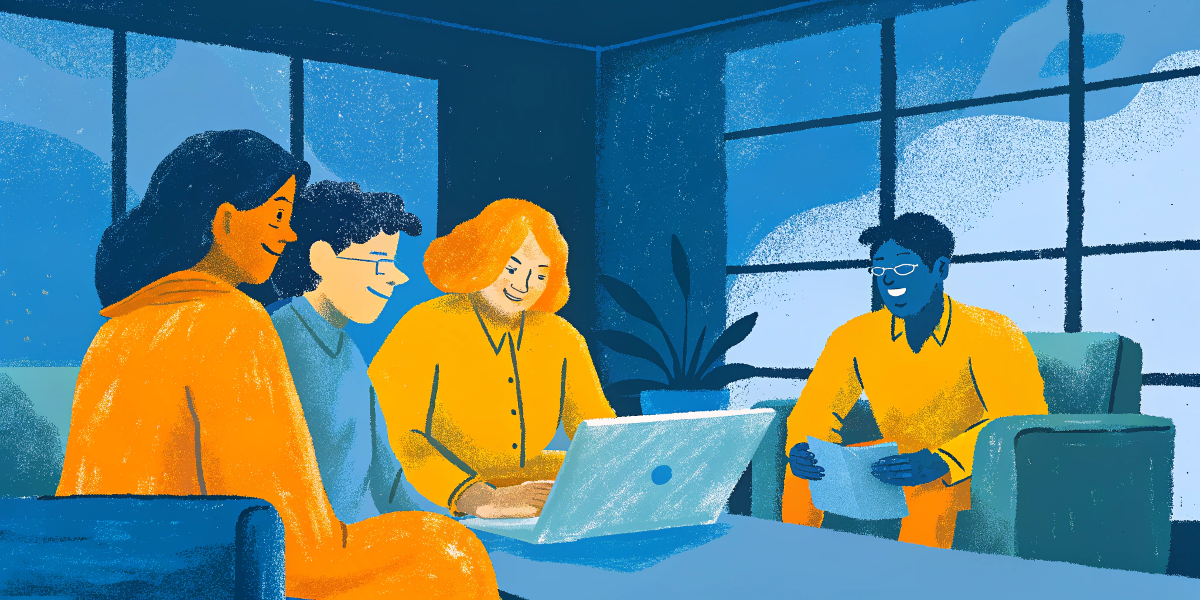
Across industries, DEI has shifted from a corporate mantra to a cultural lightning rod. Political polarization, generational divides, and rising skepticism have made diversity, equity, and inclusion one of the most debated elements of organizational life. And for younger workers, it’s a real dealbreaker: 68% of millennials and 73% of Gen Z prefer a company that prioritizes DEI over one that does not.
What once felt like a moral imperative now sits at the center of public backlash. Some claim DEI has gone too far — that it’s divisive, performative, even harmful. Others argue it hasn’t gone far enough — that we’ve confused marketing with meaningful change.
Caught in the middle are companies. In boardrooms and HR suites, leaders face growing pressure to take a stand, make a statement, or better yet, show real results. Because DEI is no longer just a box to check. These decisions now shape brand reputation, talent pipelines, and — most critically — the everyday experiences of employees.
For decades, billions have been invested in DEI programs: awareness training, culture days, glossy posters lining hallway walls. Every heritage month gets a mention. Every ERG gets a logo. But after the catering is cleared and social posts fade, many employees are still left asking: “What actually changed?”
Behind the scenes, exclusion quietly endures. Promotions stall. Job interviews bristle with coded questions. Certain voices still dominate the room. For too many, DEI has become a polished facade — a performative shield hiding deeper structural problems.
So, the question isn’t whether DEI matters. The question is whether it works — and if not, why not?
DEI 2.0 demands a different conversation. One that moves beyond optics and policy binders. One that shifts the focus from compliance to culture — embedding equity and inclusion into the real, lived rhythms of everyday work. Not as an initiative. Not as a PR line. But as a fundamental standard for how we hire, promote, collaborate, and lead.
The time has come for organizations to ask: Not whether DEI is on the agenda, but whether it’s real. And whether, behind the hashtags and headcounts, anyone is actually being seen.
Why we’re at the crossroads of DEI
DEI began decades ago as a legal and compliance necessity — a response to real historical injustice and systemic exclusion. It was created to ensure fair hiring and equal opportunity, and to repair deeply rooted inequalities shaping both society and workplaces.
The idea of equity didn’t start in boardrooms or PowerPoints. It started in the streets, courts, and legislatures. In 1964, the U.S. Civil Rights Act made it illegal to discriminate based on race, color, religion, sex, or national origin. This wasn’t just legal paperwork — it was a declaration that no one should be denied a seat at the table because of who they are.
It was followed by such landmark legislation as Title VII, the Equal Pay Act, and the Americans with Disabilities Act — each a hard-won inch closer to evening the playing field. Equity was never a question of everyone starting off on an even plane. It was a matter of recognizing all the different obstacles and making certain accommodations in order to overcome them.
By the 1980s and ’90s, the focus shifted. Businesses began measuring diversity — counting women, people of color, and other groups in hiring and promotions. Programs and quotas emerged to improve representation.
But counting heads was easier than creating real inclusion.
Representation without participation isn’t inclusion — it’s optics.
The 2000s marked a turning point in DEI history.
This period saw the rise of inclusion as a central concept — but it was also when employees started using the legal system to hold companies accountable. For the first time, individuals raised their voices openly, filing high-profile lawsuits accusing companies of discrimination.
Some companies lost major cases, including Texaco and The Coca-Cola Company — landmark moments that forced organizations to rethink not just hiring, but culture itself.
Inclusion became more than policy. It became a demand for real power and respect inside organizations.
Today, DEI stands at a crossroads.
- Employees see when inclusion is performative.
- Initiatives often miss the daily realities of teams.
- Younger generations demand authenticity, not slogans.
This gap infuriates HR leaders — the ones tasked with making DEI from policy into lived experience.
Above all, as we move ahead, we must keep our focus on the why DEI was created: to dismantle structural barriers and build equitable, equitable workplaces. We must make sure we don’t slide back into performative actions or complacency — but towards strong, lasting culture change.
So what is DEI?
DEI stands for Diversity, Equity, and Inclusion — foundational principles that define how organizations attract, support, and empower people of all backgrounds.
- Diversity means the presence of differences within a given setting, including race, gender, culture, abilities, experiences, and perspectives.
- Equity is about ensuring fair treatment and access by recognizing and addressing the unique barriers individuals face.
- Inclusion focuses on creating environments where all employees feel valued, respected, and able to contribute fully.
Today, DEI should be the heartbeat of every company that wants to be truly respected — not just another buzzword or a shiny logo on the website. It’s not about throwing money at a couple of conferences or marking a few dates in the calendar to celebrate diversity with a hashtag or a photo. We’ve all seen those culture appreciation days or Pride Month events that look good on paper but leave too many employees feeling like nothing really changed. Traditional DEI often stops at the surface — focusing on who’s in the room but not on who’s really being heard. It’s about ticking boxes, not transforming lives.
That’s why so many employees and leaders are frustrated, because these efforts don’t touch the day-to-day reality. Without real inclusion, diverse teams don’t thrive – they just exist. Without a sense of belonging, even the most well-intentioned initiatives become performative and hollow. The risk? Tokenism becomes obvious, trust breaks down, and organizations lose their best talent and reputation.
DEI 2.0 shaping the future of workplace culture
This is where DEI 2.0 was born. Not as just another buzzword, but as a movement — a shift from compliance checklists, and one-off trainings to living, breathing values that shape every moment at work. It means making inclusion part of every conversation, every decision, and every leadership action. It stands for measuring success not just by who’s hired, but by who feels safe, valued, and engaged every day.
But here’s the hard truth: not every company is ready for DEI 2.0. Many still treat DEI as a side project — something to mention in a policy or highlight during a special event — without embedding it deeply into the company’s DNA. The gap between words and actions grows, and with it, skepticism and disengagement.
The difference is clear:
| DEI 1.0 | DEI 2.0 |
|---|---|
| Compliance-driven checklists | Values and behaviors lived daily |
| One-off, isolated trainings | Continuous learning integrated into work |
| Focus on demographic representation | Focus on psychological safety and belonging |
| Top-down initiatives led by HR | Team-driven, collaborative efforts |
| Metrics focused on numbers | Metrics measuring engagement and belonging |
Every HR leader should see DEI 2.0 not as a burden, but as the path to real culture change — the kind that builds trust, sparks innovation, and keeps talent thriving. Because at the end of the day, DEI isn’t just about policy — it’s about people. And people deserve more than a façade.
Belonging: the heart of DEI 2.0
In last few years the plain old trio — Diversity, Equity, and Inclusion — added a powerful new letter: B for Belonging. This is not a fad or passing trend. It’s the link that makes DEI a lived experience.
So, what exactly is belonging? It’s not merely being counted or included as one of the group. It’s the deep, individual feeling that you actually a part of something — a work community in which your presence is recognized, your voice is heard, and your contributions are valued. It’s the experience that you need not keep parts of yourself in secret to be accepted, and that you’re not only encouraged when things are going smoothly, but especially when circumstances get difficult.
Belonging goes beyond diversity and inclusion because it also speaks to emotional safety and connection. You can have a diverse and inclusive team and policies — but if people don’t feel that they belong, the magic is not going to work.
Why does it matter so much? Because it’s directly connected to outcomes that matter to every organization:
- Engagement: Employees who feel that they belong tend to be more engaged, committed, and work harder.
- Retention: Being strongly affiliated reduces turnover — people want to stay where they feel welcome and valued.
- Innovation: When people feel secure and confident, they will share ideas freely, challenge the norms, and innovate.
Belonging is making a culture where everyone can bring their authentic selves to work — and that leads to better-informed decisions, more united teams, and stronger businesses.
The rise of DEIB is a shift from “checking boxes” to building real human connections. It’s a recognition that true inclusion happens in the heart of the organization — through everyday conversation, team dynamics, and leadership actions.
For HR leaders, more than programs and policies is needed to make belonging a corporate culture — it takes creating cultures where people feel it in the daily fabric of their work, not just read it on a page. Because at the end of the day, belonging is what turns diversity strength into equity fairness and inclusion impact.
What DEI 2.0 Demands from Leaders
The good news? Leaders today understand why DEI matters.
The not-so-good news? Good intentions don’t create real change. Action does. And not action once a year — action in the everyday heartbeat of your company.
This next stage — DEI 2.0 — is no longer about having a beautifully worded statement on your careers page or checking boxes in a diversity report. It’s about building culture, systems, and daily practices where inclusion isn’t a goal — it’s a given.
So what does that demand from leadership?
Let’s start here:
- Embed DEI into your growth strategy.
Planning to expand to new markets? Launch a product globally? Grow a cross-functional team? Bring diverse voices into the room early. Culture isn’t universal. Someone on your team might understand the norms, values, or language of a target region — and help avoid costly missteps. Better yet, they might help position your offering in a way that resonates deeply. - Update your hiring and promotion pipelines.
Ask: Who’s making the decisions?
Who’s not being seen, heard, or considered?
Don’t assume your processes are neutral — many unintentionally favor the familiar. Your job is to look harder, deeper, and fairer. - Measure what matters.
If you’re not tracking it, you’re not changing it.
Look into:- Retention and promotion rates across identity groups
- Exit interview data by gender, race, disability, or age
- Representation in leadership and decision-making roles
- Psychological safety indicators from short-form surveys
- Candidate diversity at each stage of the hiring funnel
- Participation and engagement in DEI programs or learning session
- Create spaces of true psychological safety.
Not the “we’re open to feedback” kind, but the kind where people actually speak up without fear. That can mean:- Anonymous surveys
- Monthly 1:1s that invite honesty
- Small-team open circles to surface concerns
- Or simply better listening
One of the most underused tools in DEI? Observation.
Like any good field researcher, HR must watch the room: Who’s silent? Who gets interrupted? Who’s always explaining themselves twice? Change starts not with spreadsheets, but with awareness.
From programs to practice
DEI isn’t an annual initiative. It’s the invisible structure behind how your company behaves every single day.
Start small:
- Rewire leadership meetings: Who speaks first, and who gets cut off?
- Rethink recognition rituals: Awards, shout-outs, performance reviews — who consistently shows up, and who gets missed?
- Rebuild middle management support: These managers don’t need more policy decks — they need permission to lead inclusively and tools to do it well.
What’s often missed: fear creates bias
Discrimination rarely begins with malice. More often, it begins with fear — the fear of “the other.”
When we don’t understand someone’s background, beliefs, or behavior, we fill that gap with assumptions. And assumptions turn into distance, discomfort, even hostility.
This is where education matters.
Not theoretical lectures, but tailored learning experiences based on your team’s real makeup. Train people on each other’s realities. Let them ask questions. Let them learn. Let them unlearn.
Sometimes, this changes everything. Sometimes… it doesn’t. And when it doesn’t — it’s time to act. HR must be ready to:
- Identify toxic behavior
- Intervene early
- Hold honest conversations
- And, if needed, let go of those unwilling to support a healthy, inclusive culture
Because yes, one toxic person can poison the environment for everyone else. And keeping them on board just to “avoid conflict” costs far more in the long run — in morale, retention, and trust.
Lead as you want others to behave
Like parenting, leadership is mostly modeling.
People follow what they see. If you want fairness and openness — be fair and open. If you want respect to flow freely — show it first. If you want hiring and promotions to reflect merit — prove it by your choices.
So:
- Hire for skills, not sameness.
- See cultural and religious differences not as challenges, but as strengths.
- Avoid tokenism — never highlight someone because they’re different.
- Show, by example, that they belong.
Here’s the Point.
DEI 2.0 isn’t about perfection.
It’s about consistency. About listening when it’s hard. About noticing what’s missing. About creating a culture where people feel they matter — not just when it’s convenient, but always.
Because when people feel safe, seen, and supported — they stay. They grow. They innovate. And they carry your company further than strategy ever could.
Final thought
Belonging isn’t a trend — it’s a fundamental human right and the foundation of every thriving organization. From birth, we’re all equal, not because we share the same background or abilities, but because everyone deserves respect, fairness, and a place to belong. Creating an inclusive workplace isn’t about compliance or following the latest HR fad. It’s about building a space where everyone, regardless of background, identity, or beliefs — feels valued and empowered to bring their full selves to work.
No one can take your place or overshadow you when you show up authentically, without masking who you are. Life reveals the truth of who we are. Yet some see DEI as a threat — something to fear. That fear often comes from uncertainty, the challenge of sharing power, or discomfort with change. But DEI isn’t about taking anything away or lowering standards to meet quotas. It’s about opening doors, inviting diverse voices, and making sure everyone is truly included.
Everyone deserves more than a seat at the table. They deserve to feel they belong, to feel as a vital part of a community where their unique strengths and contributions matter.
For leaders, real change from compliance to culture starts from inside. It means breaking down hidden biases, shedding old stereotypes, and seeing people not for where they come from or how they look, but for their talent, character, and passion.
When leaders live this mindset, they don’t just change policies — they transform lives, teams, and entire organizations.
Now is the time for DEI 2.0: real, daily action that builds belonging and drives lasting culture change.
-

 Collaboration5 months ago
Collaboration5 months ago18 Experts Share Tips for Businesses Switching to Remote Work
-
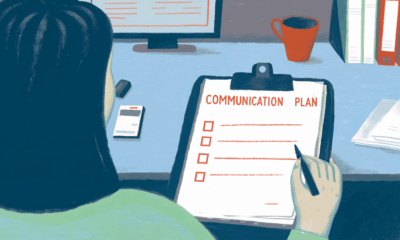
 Communication8 months ago
Communication8 months ago6 Communication Plan Templates With Examples
-
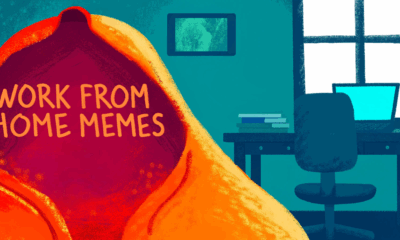
 Collaboration7 months ago
Collaboration7 months ago30 Work From Home Memes: Funny Work Memes to Make You Laugh
-
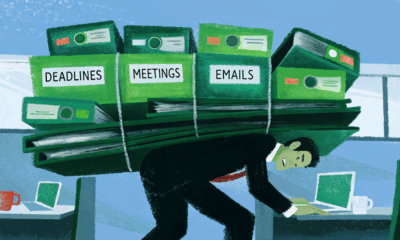
 Collaboration8 months ago
Collaboration8 months ago6 Tips for Lifting the Burden of Too Many Responsibilities
-

 Productivity7 months ago
Productivity7 months agoSuper True Mental Health Memes You’ll Probably Relate To
-

 Collaboration9 months ago
Collaboration9 months ago35+ Collaboration Quotes to Celebrate Teamwork
-
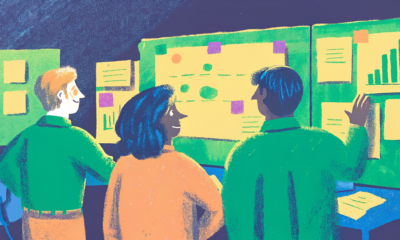
 Collaboration8 months ago
Collaboration8 months ago7 Easy Strategies for Effective Team Communication
-
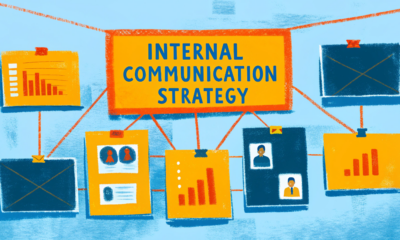
 Collaboration8 months ago
Collaboration8 months agoThe Definitive Guide to Creating an Internal Communication Strategy




